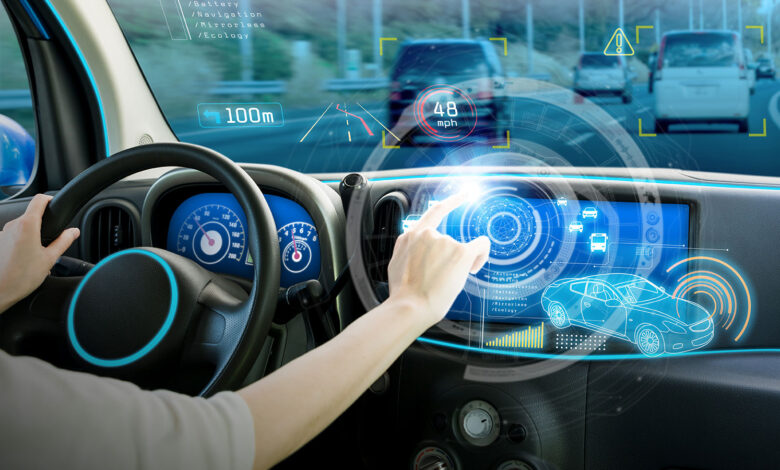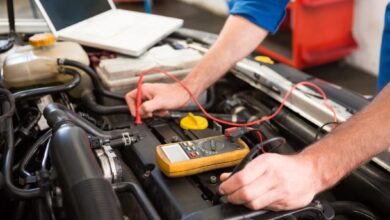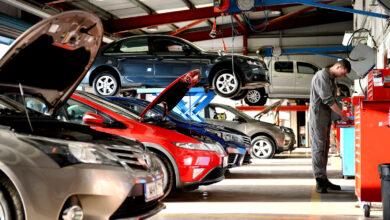Automotive Solutions: 7 Maintenance Tips for Long Vehicles

The Automotive Solutions industry has undergone tremendous change and innovation in recent years. As automakers face pressures to reduce emissions, improve safety, and keep up with rapidly changing consumer preferences, they have embraced new technologies and business models.
Some of the most exciting developments in the auto industry include the rise of connected and autonomous vehicles, vehicle electrification, and shared mobility services. Connected vehicle technologies allow cars to communicate with each other and the world around them, paving the way for self-driving cars and enhanced safety features. Electric vehicles are becoming more mainstream as battery costs fall and charging infrastructure expands. And shared mobility services like ridesharing and carsharing are changing how consumers think about car ownership.
Automakers and tech companies are racing to develop fully self-driving cars, which have the potential to radically transform transportation. While still a long way off, autonomous vehicles could enable mobility for more people, reduce accidents, and change urban design. Major strides are being made in artificial intelligence, sensors, and mapping to enable autonomous driving.
As the industry evolves, automakers are also innovating on the manufacturing side. New techniques like 3D printing and the use of lighter, stronger materials are improving efficiency, allowing for faster and more flexible production. Vehicle design is incorporating more premium materials and digital interfaces to meet consumer demand.
The following sections will explore the key innovations and trends shaping the future of the Automotive Solutions industry. Exciting new developments in connectivity, electrification, autonomy, manufacturing, design, and business models are transforming transportation. While challenges remain, the industry is steadily marching toward a more sustainable, safe, and personalized future on the road.
Connected Vehicles
Connected vehicles utilize wireless technologies to communicate with the driver, other cars on the road (vehicle-to-vehicle or V2V), roadside infrastructure (vehicle-to-infrastructure or V2I), and the “cloud.” This connectivity aims to provide various safety, mobility, and environmental benefits.
Some key benefits of connected vehicles include:
-
Collision avoidance – V2V communications allow vehicles to share speed, location, and trajectory data to detect potential collisions and alert drivers. This can prevent accidents.
-
Traffic optimization – By aggregating traffic data from many connected vehicles, transportation agencies can dynamically optimize traffic flow. This reduces congestion.
-
Enhanced navigation – Real-time traffic and hazard data provided through V2I connectivity improves routing and navigation.
-
Predictive maintenance – Automakers can use connected vehicle data for remote, proactive vehicle diagnostics and maintenance. This improves safety and reduces downtime.
-
Infotainment – In-vehicle wi-fi and integration with smartphones enable entertainment, productivity, and convenience features.
-
Emergency response – Crash data and vehicle location can be automatically sent to emergency services to expedite and improve incident response.
While connectivity features like Bluetooth and in-vehicle wi-fi are becoming standard, fully realized V2V and V2I capabilities are still emerging. Dedicated short-range communications (DSRC) technology is the leading V2V/V2I technology, with trials ongoing by automakers and transportation agencies. However, most industry experts believe cellular vehicle-to-everything (C-V2X) will be the dominant long-term connectivity solution. Major rollout of mature V2V/V2I infrastructure is still years away, but the foundation is being built now.
Electric Vehicles
Electric vehicles (EVs) have seen tremendous growth and adoption over the past decade. Major automakers like Tesla, GM, Ford, Volkswagen, and others are investing heavily in EV development and manufacturing. There are several key factors driving the shift towards EVs:
Growth of EVs
Global EV sales have grown exponentially, from just over 2 million vehicles in 2016 to over 6 million in 2020. Key markets like China, Europe, and the U.S. have seen surging demand. Government incentives and stricter emissions regulations have accelerated adoption. Many automakers have announced plans to phase out gas vehicles and transition their lineups to mostly or all-electric over the next 10-20 years.
Benefits of EVs
Some of the main benefits of EVs include:
-
Environmental benefits – EVs produce zero direct emissions, which can significantly reduce greenhouse gases and air pollution, especially when paired with renewable energy sources for charging.
-
Performance – Electric motors provide instant torque and smooth powerful acceleration. EVs can outperform similar gas models.
-
Reduced maintenance – EVs have far fewer moving parts than gas vehicles, requiring less maintenance over their lifespan.
-
Lower fueling costs – Electricity prices are lower and more stable than fluctuating gas prices. Home charging can further reduce costs.
-
Incentives – Many governments provide incentives like tax credits and rebates to reduce the upfront cost of EVs.
Challenges and Future Outlook
While the EV market is growing rapidly, some challenges remain:
-
Range anxiety – Most affordable EVs still have a more limited range than gas vehicles. Charging infrastructure is improving but still sparse in many areas.
-
Higher sticker prices – Battery costs mean EVs have a higher upfront cost, even with incentives. Prices should fall as production scales up.
-
Charging time – Fully recharging an EV takes much longer than filling up at a gas station. Fast charging can help but adds complexity.
-
Grid capacity – Utilities will need to upgrade infrastructure to handle large growth in EV charging demand.
The EV market should continue its strong growth as ranges improve, prices fall, charging networks expand, and more models become available. Key factors to watch will be battery tech advances, policy support worldwide, charging infrastructure buildout, and consumer acceptance.
Autonomous Vehicles
Self-driving or autonomous vehicles represent a major innovation in Automotive Solutions technology. These vehicles have varying levels of automation, from basic driver assistance features to full self-driving capabilities.
Levels of Vehicle Autonomy
The Society of Automotive Solutions Engineers (SAE) has defined 6 levels of driving automation, from Level 0 (no automation) to Level 5 (full automation). Most vehicles on the road today are Level 1 or 2, with basic features like cruise control or lane-keeping assist. Level 3 vehicles can handle some driving tasks but require driver oversight. Level 4 vehicles can drive themselves under certain conditions, while Level 5 vehicles can drive anywhere that a human driver could.
Current State of Technology
Major automakers and tech companies like Tesla, Waymo, GM, and Ford are developing and testing autonomous vehicles. Most current models are Level 2 or 3, with a few limited Level 4 vehicles being tested in geo-fenced areas. Companies like Waymo have launched limited robotaxi services in certain cities. However, Level 5 autonomous vehicles are still years away from widespread adoption. Ongoing challenges include developing reliable sensors, handling complex driving scenarios, and achieving regulatory approval.
Challenges for Autonomous Vehicles
Some key challenges facing autonomous vehicles include:
-
Perception – Accurately detecting and understanding the vehicle’s surroundings using cameras, radar and other sensors. This is difficult in poor weather or complex environments.
-
Decision Making – Programming the vehicle to make safe driving decisions and handle edge cases. Advanced AI is required to match human-level driving skills.
-
Redundancy and Safety – Ensuring fail-safes and backups are in place in case of sensor or system failures. Safety is paramount.
-
Cybersecurity – Protecting against hacking of vehicles’ systems and data.
-
Regulations – Navigating differing regulations and insurance liability across states and countries.
Future Outlook
Experts predict increasing adoption of higher-level autonomous vehicles over the next 5-10 years, with fully self-driving cars on the roads by 2030 or sooner. Key factors will be continued technology improvements, infrastructure support, regulation changes, and consumer acceptance. Autonomous vehicles have the potential to transform transportation by improving safety, efficiency, and accessibility. However, the transition will take time as both the technology and regulations evolve. Ongoing innovation and testing will pave the way for more advanced self-driving vehicles.
Shared Mobility
The rise of shared mobility services like ride-hailing and carsharing is transforming how people get around. Services like Uber, Lyft, Zipcar, and others have made it easy to access a vehicle on-demand through a smartphone app. This new model provides more flexibility and options for consumers.
Shared mobility offers several benefits compared to traditional car ownership. It reduces the need for parking infrastructure in cities. Shared vehicles are utilized more efficiently than privately owned cars. Shared mobility provides affordable access to vehicles for non-drivers like the elderly or low-income groups. It enables point-to-point transport without having to drive yourself or own a car.
However, shared mobility also poses challenges for cities and regulators. Ride-hailing increases congestion and emissions as drivers cruise around waiting for passengers. It competes with public transit and may decrease ridership. There are concerns about equity of access across neighborhoods. Managing curbside pickup/drop-off areas is an issue. Ride-hailing drivers face challenges like income volatility and lack of benefits.
Looking ahead, shared mobility will likely continue growing as more people forego traditional car ownership. Integrating shared mobility with public transit will be important for efficient mobility. Self-driving vehicles could enable new shared mobility business models in the future. Regulation will aim to maximize the benefits of shared mobility while mitigating the downsides. Overall, shared mobility has the potential to provide convenient, affordable access to vehicles for more people if managed properly.
Vehicle Safety
Vehicle safety has become a major area of innovation and focus in the automotive solutions industry. Advanced technologies are enabling vehicles to avoid accidents and protect occupants when crashes do occur.
One key area is advanced driver assistance systems (ADAS). These technologies use sensors, cameras, radar, and other tools to help drivers avoid accidents. For example, automatic emergency braking can detect an impending collision and brake automatically if the driver does not respond in time. Other ADAS features include lane departure warning, blind spot monitoring, rear cross-traffic alert, adaptive cruise control, and more. These systems help compensate for driver errors and inattention, preventing many crashes.
Vehicle-to-vehicle (V2V) communication is an emerging technology with great promise for improving safety. V2V enables vehicles to wirelessly share information about their speed, location, and direction with nearby vehicles. This allows vehicles to coordinate and warn drivers about potential crashes. For example, if a car suddenly brakes ahead, following cars can be alerted immediately instead of waiting for the brake lights to become visible. This extra reaction time could prevent many rear-end collisions. The U.S. Department of Transportation has been working to enable and encourage the adoption of V2V.
There are also many other Automotive Solutions safety innovations in development. Airbag designs continue to advance, providing better protection in a wider range of crashes. Seat belt technologies are improving as well. Autonomous emergency braking systems are becoming more sophisticated and reliable. Safety cage designs and crumple zones continue to evolve. The field of Automotive Solutions safety is rapidly growing, with the potential to save many lives in the coming years.
Vehicle Lightweighting
Vehicle light-weighting involves using lighter materials to reduce the overall weight of a vehicle. This has become an important focus for automakers in recent years for several key reasons:
-
Reducing vehicle weight improves fuel efficiency and lowers emissions. Studies have shown that reducing a vehicle’s weight by 10% can improve fuel economy by 6-8%. This is crucial for meeting stricter government fuel economy and emission regulations.
-
New lightweight materials like aluminum and carbon fiber are enabling automakers to take weight out while maintaining or improving crashworthiness and vehicle dynamics. Ford’s use of aluminum in their F-150 pickup truck shed up to 700 pounds while maintaining capability and safety.
-
Lower vehicle weight directly improves acceleration, braking, and handling by reducing inertia. This leads to a better driving experience.
-
Weight reduction allows for the right-sizing of components like engines, batteries, and powertrains while maintaining performance. This saves cost and complexity.
Key lightweight materials enabling weight reduction include aluminum, magnesium, high-strength steel, carbon fiber-reinforced plastics, and plastics/composites. Automakers are increasingly incorporating these materials into vehicle bodies, frames, wheels, and components. For example, carbon fiber is being used for hoods, roofs, and body panels.
Overall, vehicle lightweighting delivers lower emissions, improved fuel economy, better performance, and cost savings. It is a crucial aspect of modern Automotive Solutions engineering and design. Advanced materials will enable further weight reductions in the coming years.
Vehicle Design
Vehicle design has undergone major changes in recent years to improve the overall driving experience and meet evolving consumer preferences. Exterior designs are becoming more aerodynamic to boost fuel efficiency while also incorporating bold, stylish elements to attract buyers. Some key trends include:
-
More rounded edges and smooth surfaces enhance aerodynamics. Brands like Tesla have embraced very minimalist, flowing designs.
-
Bolder grilles and lighting elements to make vehicles stand out. LED lighting technology allows for thinner, more flexible headlights and taillights.
-
Crossover vehicles blending the high seating of SUVs with the handling and fuel economy of sedans. These versatile crossover designs are surging in popularity.
Interior designs are focusing heavily on user experience, comfort, and technology integration. Key interior design trends include:
-
UX-focused dashboards with centrally located touchscreens and minimalist controls. Voice assistants and gesture controls reduce distractions.
-
Open, airy cabin space with thinner seats, higher ceilings, and larger windows or panoramic sunroofs. This creates a roomier, more modern feel.
-
Higher quality materials like leather, wood accents, and metal trim for an upscale, premium vibe. Ambient interior lighting also adds flair.
-
More charging ports, storage bins, and configurability like sliding rear seats to adapt to passenger and cargo needs.
Advanced technologies like 3D printing and new lightweight composite materials allow more creativity and customization in both interior and exterior vehicle designs today. The focus is squarely on styling, comfort, and creating an optimal user experience.
Vehicle Manufacturing
Vehicle manufacturing has seen major advancements in recent years through the adoption of advanced technologies and processes. Some key trends shaping the future of auto manufacturing include:
Additive Manufacturing
Also known as 3D printing, additive manufacturing allows automakers to print parts layer-by-layer rather than using traditional subtractive techniques like machining. This enables faster prototyping, more design flexibility, reduced waste, and lower costs. Major automakers like BMW and Ford are using 3D printing for prototypes and some production parts. As the technology matures, its use will expand.
Advanced Robotics
The auto industry has long relied on robotics for welding, painting, and assembly. Now, improvements in flexible robotic systems, artificial intelligence, and collaborative robots (that work alongside humans) are enabling more automation. This improves quality and efficiency while reducing injury risk for workers. Robots can take over dangerous and repetitive tasks.
Sustainable Manufacturing
With growing awareness of environmental impact, automakers are adopting cleaner production methods. Energy use, emissions, and waste are being reduced through LED lighting, renewable energy, recycling programs, and water conservation. Some plants are approaching zero waste. Companies are also carefully tracking supply chains to avoid materials from unethical sources. Sustainability is becoming a competitive differentiator.
In summary, auto manufacturing is transforming through the use of emerging technologies. Automation, additive techniques, and a focus on sustainability will define the factories of the future, allowing automakers to build vehicles more efficiently while reducing environmental impact.
Conclusion
The Automotive Solutions industry has undergone tremendous innovation and change over the past decade. Key innovations discussed include connected vehicles with infotainment and telematics systems, electric and hybrid powertrains, autonomous driving capabilities, shared mobility services, advanced safety systems, vehicle lightweighting, and new approaches to design and manufacturing.
These new technologies are transforming the driving experience, reducing environmental impact, and saving lives. Connected services keep drivers informed, productive, and entertained on the go. Electrification is making vehicles cleaner, quieter, and more efficient. Self-driving cars promise to reduce accidents and congestion. Ridesharing provides flexible mobility. Advanced safety features help avoid collisions and protect occupants. New materials cut weight and boost fuel economy. Agile design and production methods allow more customization.
Looking ahead, the integration of these solutions will define the future of transportation. Fully autonomous, electric robot-taxis could eliminate private car ownership in cities. Vehicle connectivity will enable novel services and capabilities. More sustainable manufacturing and materials will shrink environmental footprints. The automotive industry will continue harnessing technology to benefit people and the planet.
Innovation in the Automotive Solutions space is critical for addressing transportation challenges in a growing, urbanizing world. While advances may disrupt established players, the opportunities for improved safety, efficiency, and mobility are vast. Collaboration between the public and private sectors will ensure new solutions are implemented thoughtfully. The pace of change will accelerate, but human-centric design endures. The automobile has always been more than a machine, and its evolution will remain centered on liberating human potential.





